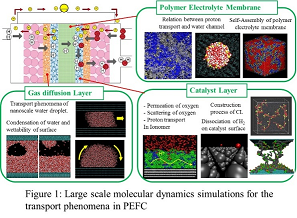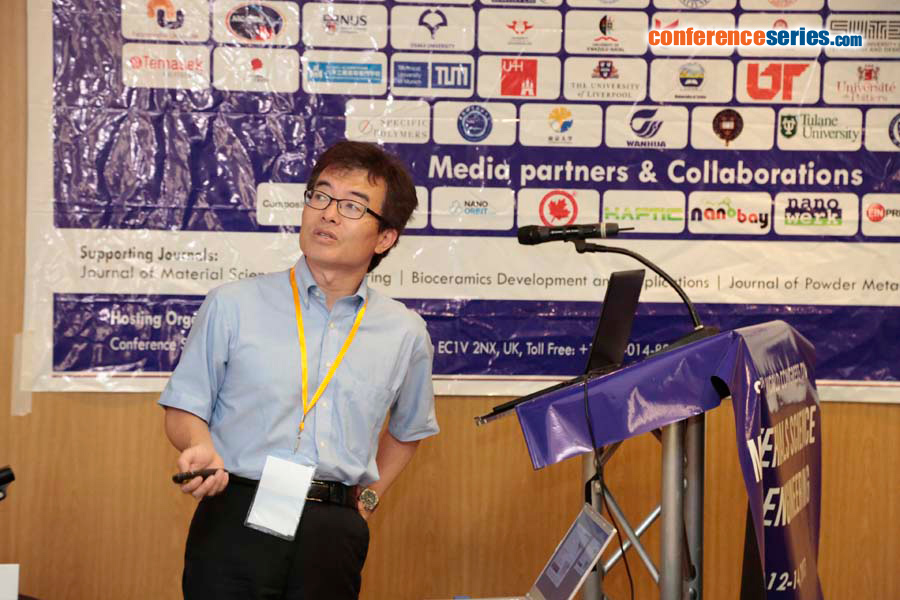
Takashi Tokumasu
Tohoku University, Japan
Title: Relation between nanoscale structures and transport phenomena in materials of polymer electrolyte fuel cell
Biography
Biography: Takashi Tokumasu
Abstract
Polymer electrolyte fuel cells (PEFC) are used as the next-generation power supply system due to its low environmental burden, high efficiency, and availability for dispersed power systems and emergency use. Transport resistance of reactant and product materials such as proton, oxygen and water is the determining factor of its efficiency and therefore it is necessary to analyze the transport phenomena of proton, oxygen and water in PEFC as fast as possible to develop its performance and efficiency. Computational fluid dynamics (CFD) based on macroscopic transport equations is often used as a conventional numerical analysis. A membrane electrode assembly (MEA) of PEFC, however, consists of gas diffusion layers (GDL), micro porous layers (MPL), catalyst layers (CL), and a polymer electrolyte membrane (PEM), where many nanoscale structures are constructed. In such flow fields, the characteristics of transport phenomena in MEA cannot be analyzed at the macroscopic point of view. Molecular simulation is a powerful tool to analyze these phenomena. In this study these nanoscale transport phenomena are analyzed by large scale molecular dynamics (MD) simulations and the relation between the nanoscale structures and the transport phenomena is analyzed in detail (Figure 1). Especially, the transport phenomena of proton in PEM which has highly anisotropic water structures, oxygen permeability, oxygen scattering and proton diffusivity of ionomer in CL, and the transport phenomena of nanoscale water droplet in MPL were simulated. In the analysis of proton transfer in PEM and ionomer, we considered not only Vehicle mechanism but also Grotthuss mechanism and the diffusivity of proton at various water contents were estimated. This information leads to a new design concept of materials for next generation polymer electrolyte fuel cells.

Recent Publications:
1.Kurihara Y, Mabuchi T, Tokumasu T (2017) Molecular analysis of structural effect of ionomer on oxygen permeation properties in PEFC. J. Electrochem. Soc. 164: F628-F637.
2.Mashio T, Ohma A, Tokumasu T (2016) Molecular dynamics study of ionomer adsorption at a carbon surface in catalyst ink. Electrochimica Acta 202: 14-23.
3.Fukushima A, Mima T, Kinefuchi I, Tokumasu T (2015) Molecular dynamics simulation of channel size dependence of the friction coefficient between a water droplet and a nano-channel wall. J. Phys. Chem. C119: 28396-28404.
4.Mabuchi T, Fukushima A, Tokumasu T (2015) A modified two-state empirical valence bond model for proton transport in aqueous solutions. J. Chem. Phys. 143: 014501.


